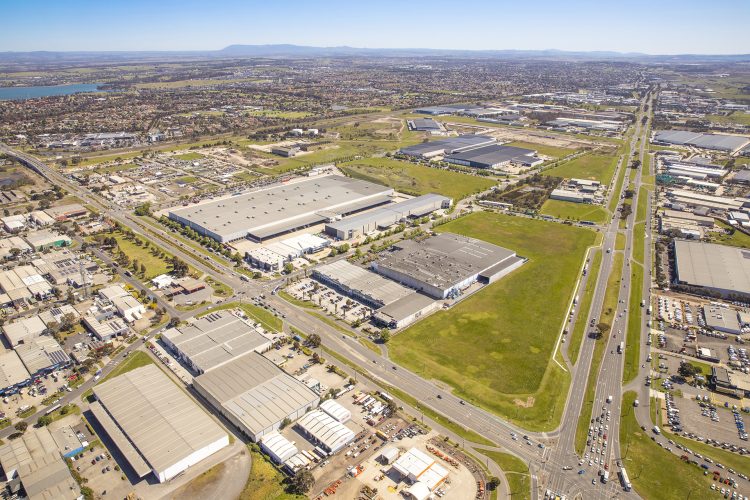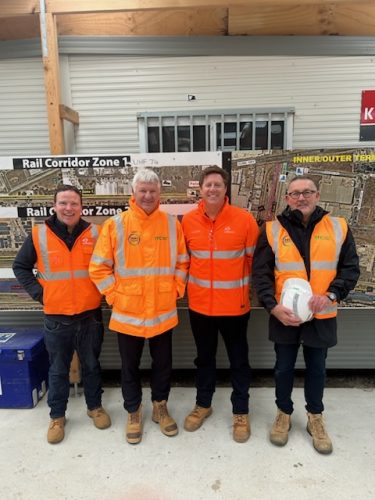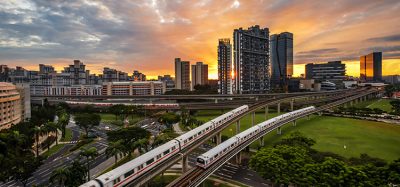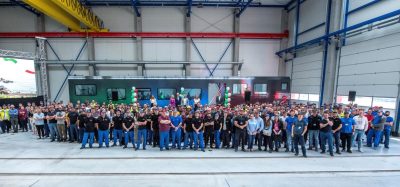Agreement between Australia’s largest rail freight company and Victoria’s largest intermodal
Posted: 14 July 2025 | Elizabeth Jordan - Global Railway Review | No comments yet
In a major development for both the Victorian and national rail supply chains, Australia’s largest rail freight company and the state’s newest and largest intermodal terminal have signed an agreement for the utilisation of the facility for the handling of containerised freight for up to nine years.


Intermodal Terminal Company CEO Mishkel Maharaj said: “The services agreement relating to the $400 million Melbourne Intermodal Terminal (MIT) will provide Aurizon and its customers with interstate freight train services from Melbourne’s north via the largest and arguably the most state-of-the-art intermodal terminal in Victoria.
“Aurizon’s supply chain customers will benefit from the intermodal terminal incorporating the latest technologies in safety and operational efficiency as well as being large enough to accommodate Aurizon’s interstate growth plans. Aurizon and its customers also have the added benefit of the terminal being centrally located in Melbourne’s fast growing northern industrial and logistics precinct with efficient access to other major industrial zones in the greater metropolitan area,” he said.
Aurizon Bulk & Containerised Freight Group Executive George Lippiatt said: “The new MIT has opened up new opportunities for Aurizon as it continues to grow national container volumes and enhance service offerings for customers.
“Intermodal terminals are critical to the growth of freight supply chains in Australia and ensuring rail can do the heavy lifting for interstate rail linehaul services across the nation,” George said.
“This terminal is strategically located and provides efficient connections to the national rail network and the Port of Melbourne creating opportunities for rail to support new markets across Australia. “I have seen firsthand the investment being made in the MIT to create a high-capacity efficient terminal for both interstate and import-export rail services.
Aurizon welcomes the opportunity to utilise MIT which provides an alternative to the current footprint of Melbourne for rail freight. “We are excited by the future of the freight and logistics investments and developments in the northern Melbourne suburbs and will be working with existing and potential customers to realise the benefits of the MIT,” he said.


Backed by Aware Super, the Melbourne Intermodal Terminal (MIT) is a central component to a broader development being undertaken by Aware Real Estate and global asset management firm Barings to establish a major integrated industrial and logistics precinct at Somerton called the Melbourne Intermodal & Industrial Exchange (MIIX).
The total investment of these terminal and precinct developments is $1.6 billion, representing the largest privately funded enhancement to the Victorian freight and logistics sector in a generation.
Currently, construction of ITC’s 45-hectare MIT is 90% complete, with the 15-hectare Inner Terminal due to commence operations in October this year.
Crucially, the MIT is located where the freight is, within a seven-kilometre radius of the MIT is currently three million square metres of warehousing, and the investment into MIIX will grow this further. For perspective, the total combined 31-hectare inner and outer terminal hardstand areas of the future MIT will be equivalent to approximately 14 MCG AFL fields.
Mr Maharaj said connecting and integrating rail networks, terminals and services to existing precincts of concentrated freight demand and consolidation is fundamental in helping to stimulate customers in the supply chain to better utilise the economic, environmental and social benefits of hauling large volumes of freight by rail.
“MIT customers will benefit from co-located warehousing from the surrounding MIIX, while end customers in the supply chain like supermarket chains and big box retailers will have the added bonus of using rail in their transport operations to help reduce Scope 3 carbon emissions,” he concluded.
Stay Connected with Global Railway Review — Subscribe for Free!
Get exclusive access to the latest rail industry insights from Global Railway Review — all tailored to your interests.
✅ Expert-Led Webinars – Gain insights from global industry leaders
✅ Weekly News & Reports – Rail project updates, thought leadership, and exclusive interviews
✅ Partner Innovations – Discover cutting-edge rail technologies
✅ Print/Digital Magazine – Enjoy two in-depth issues per year, packed with expert content
Choose the updates that matter most to you. Sign up now to stay informed, inspired, and connected — all for free!
Thank you for being part of our community. Let’s keep shaping the future of rail together!
Related topics
Freight, Multimodality, Operational Performance, Refurbishment, The Workforce







